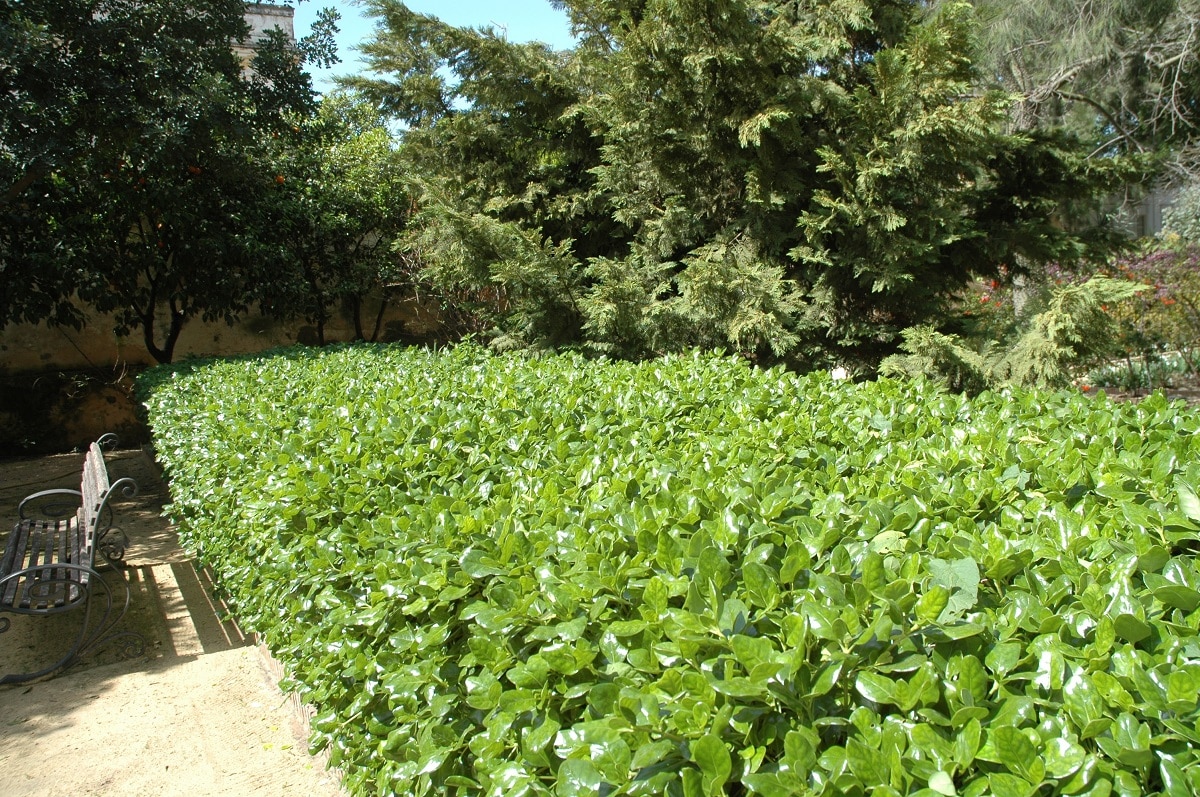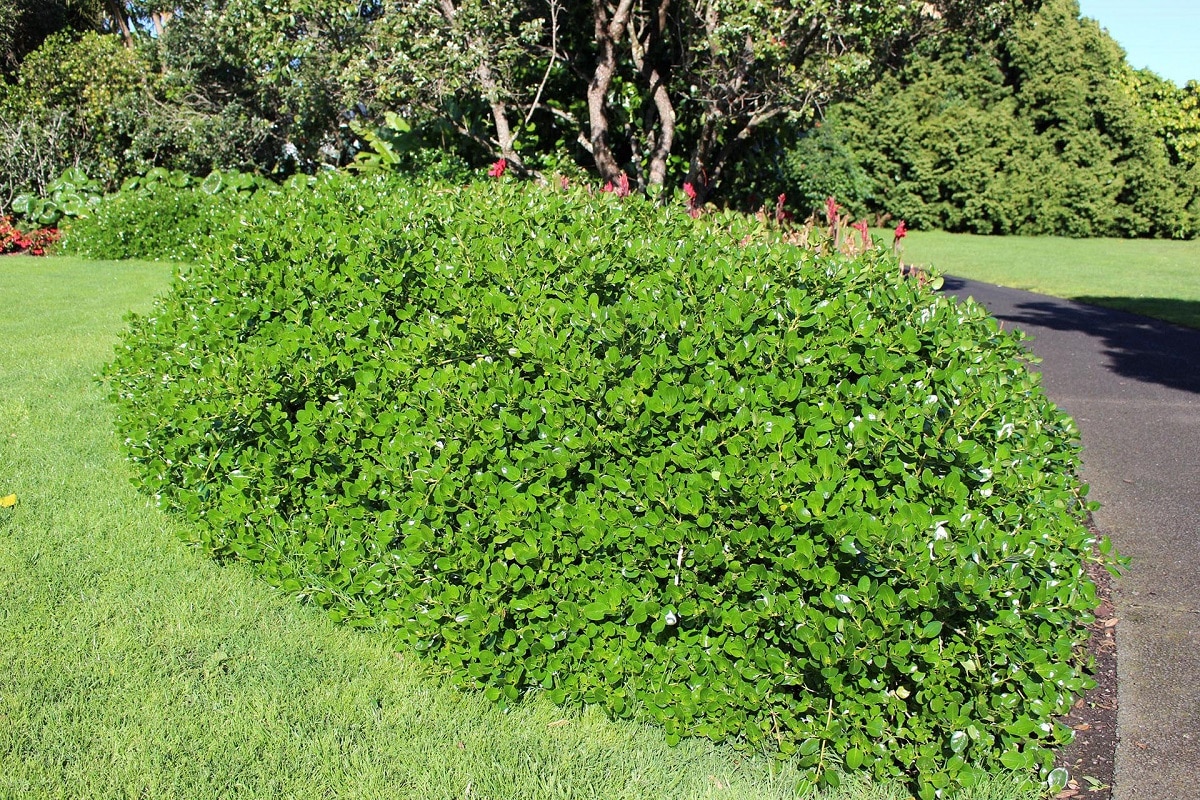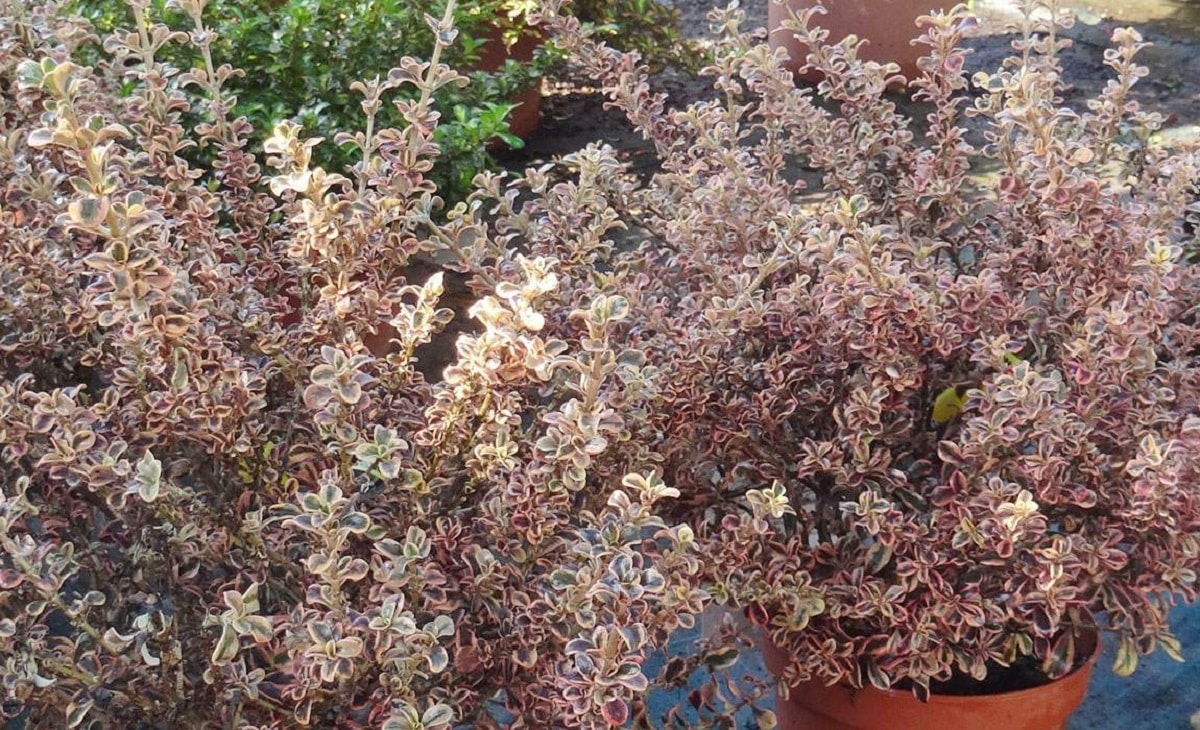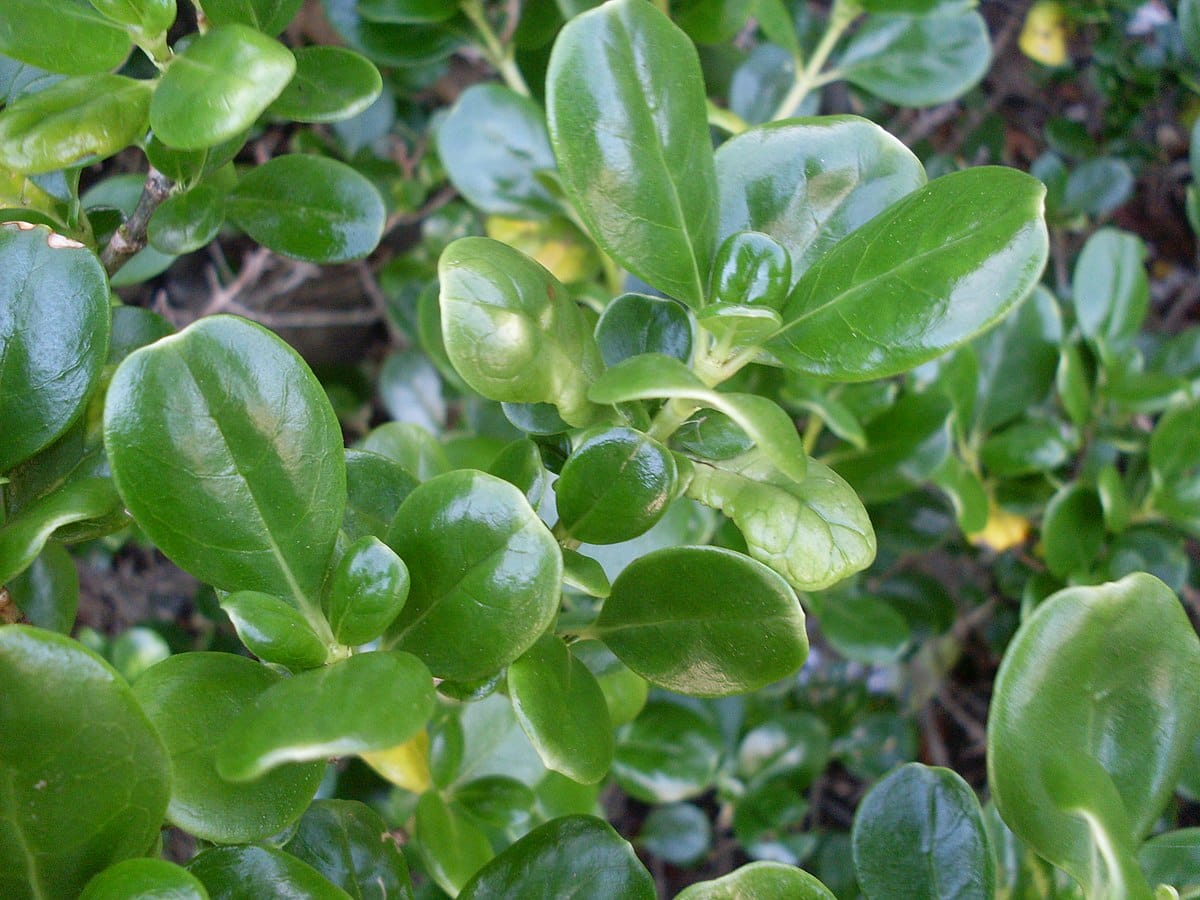
There are around 200 species of plants in the genus Coprosma, and this time we will present Coprosma repens, a bushy-looking ornamental plant native to Australia and New Zealand, currently cultivated in Spain for landscaping and xeriscape, and exported to other European countries. It grows fast and vigorously, making it a very interesting hedge plant. In addition to being bushy, its thick and shiny oval leaves give it excellent ornamental value.
In this article we are going to tell you everything you need to know about the Coprosma repens, its characteristics, care and maintenance.
Key features

It is included in the Australian group of ornamental plants. Its scientific name is Coprosma repens, and is known by popular names such as brilliant, coprosma or mirror plant. It belongs to the Rubiaceae family and is native to Australia and New Zealand. A plant with an excellent Mediterranean climate that, under the right conditions, can be grown in any coastal area of the world due to its resistance to saline environments.
It is a fast growing shrub that can be pruned to a height of three meters high and about two meters wide. Its most outstanding ornamental feature is the shine of its leaves, hence its two most common names: shiny plant and mirror. These leaves can be green or variegated with edges of yellow, red, pink, etc. Their size varies from breed to breed, but all are attractive, thick, shiny, and oval in appearance, ending in a point.
From an ornamental point of view, its flowering is not the most striking. It produces small green or white flowers that are not very decorative. Coprosma repens it is dioecious, so it has male and female sex organs on separate flowers and stems. This means that to obtain its fruit you must have both sexes. Its fruits are very decorative, yellow or orange in color and small in size.
Requirements of the Coprosma repens
Coprosma repens In the garden it is versatile since it can be used to make hedges, cover spaces, and even in pots as a single plant on terraces. The location of the Coprosma repens It's very important. It must be in full sun to shine fully, although it can also live in partial shade.
It is very resistant to cold and can withstand sporadic frosts of no less than -5ºC. Regarding the topography, it adapts well to calcareous soils, as is usual in many areas of the Mediterranean region, although it prefers light soils rich in organic matter. So it would be appreciated to provide organic amendments, manure, compost or simply add a peat substrate as an all purpose soil or planting medium before planting in the garden if it is low.
Maintenance and transplant

Its transplant is best done in spring. As it is a shrub that is very tolerant to drought and returns to the quality of the soil, if the soil is very cohesive, it is advisable to add silica sand, washed river sand, perlite, expanded clay or other inert material to lighten the weight of the substrate and increase its strength. permeability. Avoid waterlogging, waterlogging will affect the normal development of its root system.
When transplanting into larger pots, it is advisable to place a small layer of gravel in the bottom of the pot to facilitate drainage. As for its irrigation, it should be moderate, and wait for the soil to be slightly dry before watering. Since it does not tolerate flooding, these periods of water scarcity help its roots to function better.
Its fertilization must use compound fertilizers, balanced and rich in trace elements. Its recommended application is fertigation at low but frequent doses.
Coprosma repens it even recognizes the art of pruning, so it can also be used for hedges. Trimming is a lot of fun to keep the desired shape. The time to plant it can be in mid or late autumn to allow germination to begin before winter nutrition ceases and it shows all its foliar splendor in spring, its main ornamental attraction.
Its long branches can also be shortened at the end of winter depending on the prevailing weather conditions. In all cases, the problem is to obtain more compact and branched plants by eliminating their broken, dry or misdirected branches.
Plagues and diseases
It usually has few phytosanitary problems as it is very resistant in this regard. So, Due to its rusticity, it is quite resistant to typical garden pests, and if we take care of its adequate light and irrigation conditions, the land will grow without problems.
Another issue is when it is grown in a greenhouse, from cutting to sale. In this case, the rest of the time there may be problems of root diseases or leaf-sucking insects during rooting, although as professional nurseries they easily control them.
Cultivation of Coprosma repens

It can be grown in spring from cuttings. For this we can use branches cut from pruning to obtain cuttings. The method consists of using the healthiest shoots and cut the stems with three or four pairs of leaves. Make sure they are not too soft if they are on top as well. The incision must be clean to avoid crushing the incision area, as this can become a source of infection.
Next, we will remove a few lower leaves and plant it in a tray or small pot with alveoli. Your substrate can be a substrate for indoor plants to which about 30% silica sand, coconut fiber or perlite is added to improve its aeration.
The newly planted cuttings will be placed in a protected place with partial shade, keeping the soil slightly humid and a high environmental humidity to avoid dehydration. At temperatures between 20 and 25ºC, in two or three weeks they will begin to put down fine roots.
Once the root ball is formed and acclimated, the cuttings are ready to be planted in a larger pot. For this we can use, for example, a universal substrate and improve its structure with aggregates, as we have already proposed before.
Throughout the crop we will regulate the irrigation to keep the substrate humid but not flooded. We will also fertilize with fertilizer type 18-12-24 plus trace elements added to irrigation water at the dosage recommended by the manufacturer.
After several months of cultivation, just in time for early spring or late summer, they can be grown directly in the garden or in large pots and enjoyed as isolated plants.
I hope that with this information you can learn more about the Coprosma repens and their characteristics.